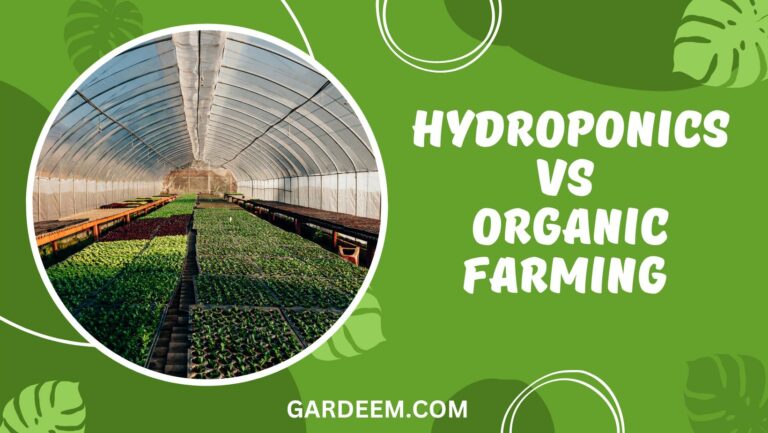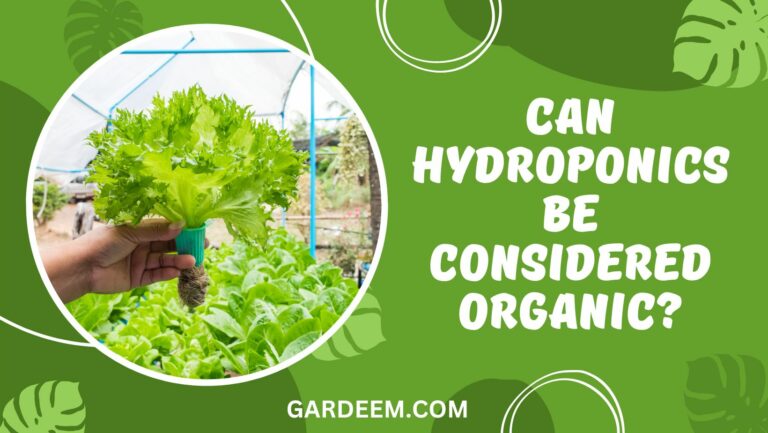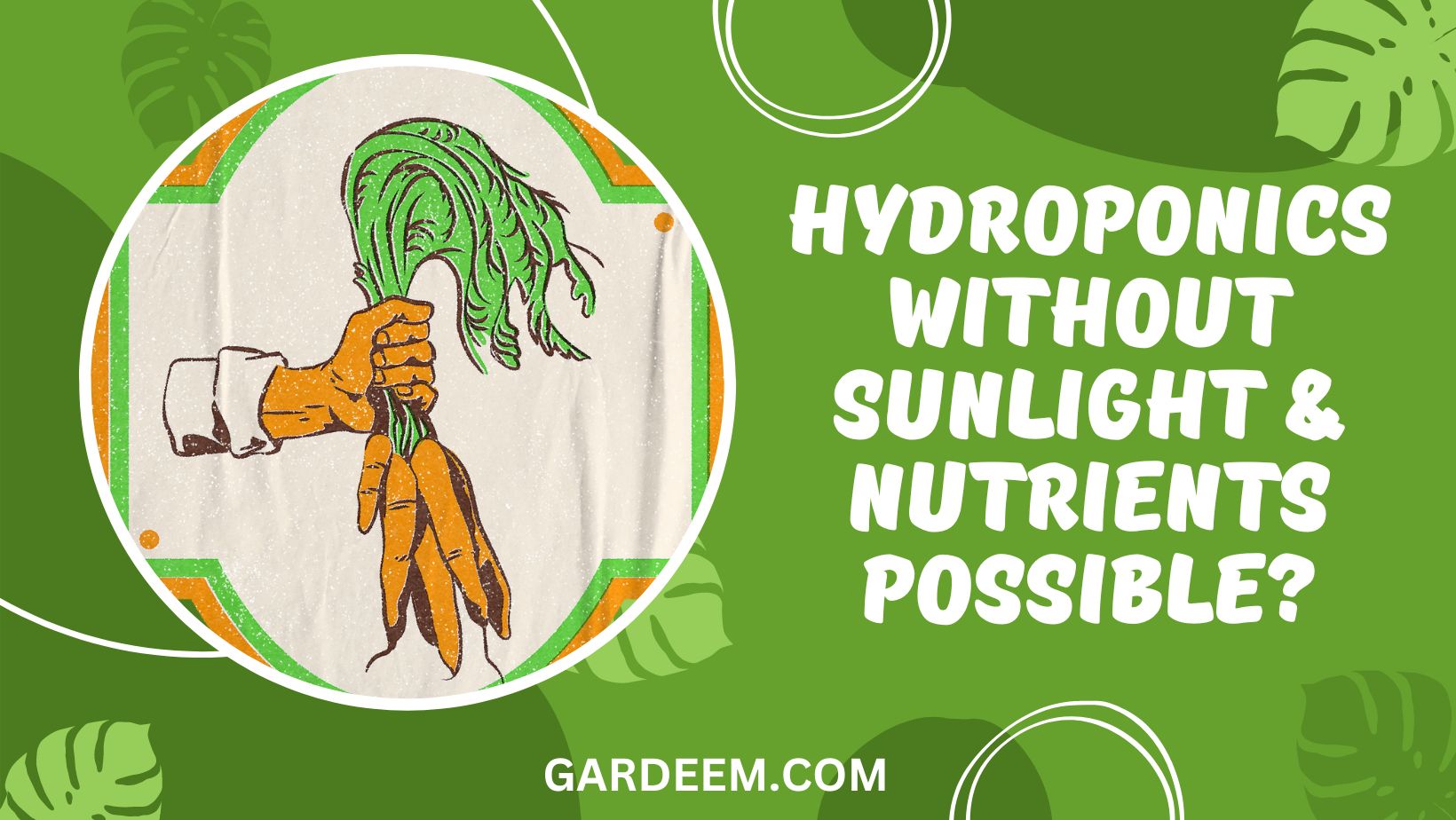
Hydroponics is a fantastic method for growing plants; you’re responsible for everything within the system, so you can optimise your setup to produce the best harvest possible.
One common question that many new growers have about the setup is around lighting and understanding if hydroponics without sunlight is possible.
Is Hydroponics Without Sunlight Possible?
This is a pretty simple answer, hydroponics without sunlight is possible; however, it does have specific challenges that you need to understand to get the most from your hydroponic system.
What Do Plants Need To Grow?
So now we’ve established that it’s possible, next we need to understand what we can do to replace natural sunlight in your system but first it’s worth understanding what plants need to grow.
There are five key things that plants need to grow:
- Light
- Air
- Water
- Nutrients
- Space to grow
Within our systems we aim to provide our plants with optimal levels of each, but while air, water, space and nutrients are fairly easy to provide – replacing the sun is tricky.
How Light Affects Plant Growth
Plants use light as a source of energy through a process called photosynthesis.
Photosynthesis takes place in the part of the plant cell containing chloroplasts, these are small structures that contain chlorophyll. For photosynthesis to take place, plants need to take in carbon dioxide (from the air), water (from the ground) and light (usually from the sun).
Without sufficient light, plants can’t make enough energy so don’t grow properly.
However, as you’re about to find out, you can’t just put a plant before a convention light bulb and expect it to grow.
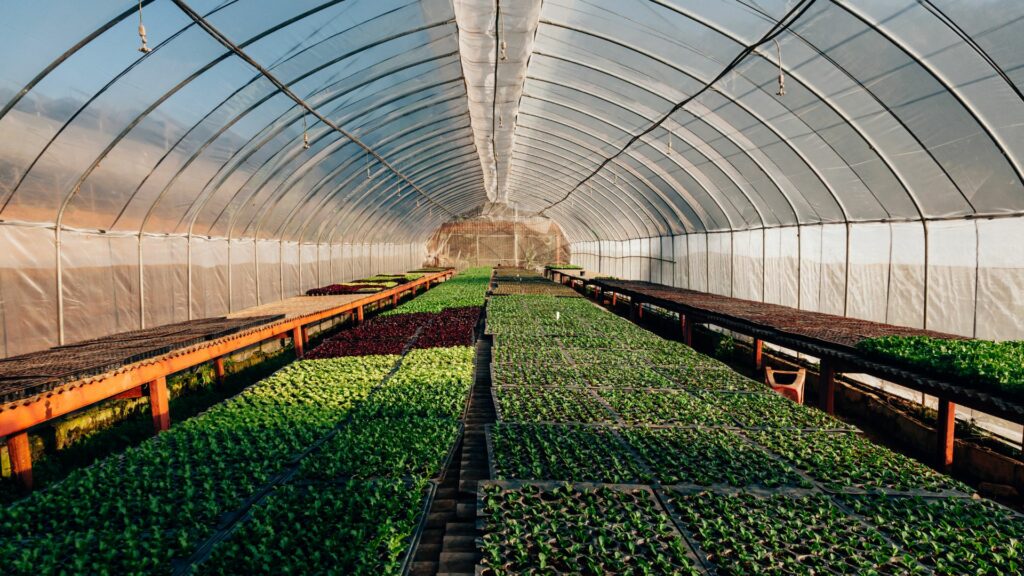
Why the Light Spectrum is Important?
To get plants to grow properly indoors, you must use a light source with the right spectrum.
Visible light, that is, light that the human eye can see, falls between the wavelengths of 390 – 700 nanometers.
It’s easy if you think of the light spectrum as a colour band starting with purple on the left and red on the right, similar to the image below:

Blue Light Spectrum 400-500nm
When plants are in their growing stage, they use light from 400-500nm which is packed with energy, this is known as the plant is in a vegetative state.
When plants don’t get enough blue light in their early stages of development, they grow weak and have yellow streaks in the leaves rather than green.
So if you’re starting seeds indoors, your light must be heavy with blue light.
Red Light Spectrum
During the flowering stage of your plants development, they will use the lower energy red part of the spectrum between 650nm and 730nm.
If plants don’t get enough red light, they aren’t able to flower properly.
Keep These Things In Mind
So if we’re aiming for hydroponics without sunlight then we need to ensure we’re using a grow light that is able to provide your plants with both sufficient quantities of blue and red light which traditional lighting can’t offer.
This is where specialist grow lights come in.
Grow Lighting
As we wrote in our hydroponic lighting guide, there are three main types of hydroponic grow light to choose from:
High-Intensity Discharge (HID)
These are incandescent lamps that are very popular with indoor growers. Typically they are available in High-Pressure Sodium which contains more red light and Metal Halide which contains more blue light.
The downside of HID lighting is that they produce a lot of heat and require a lot of energy to run which is why they’re mostly used by commercial growers.
Fluorescent
These lights produce significantly less heat than HID lamps, however, they are more focused on the blue light spectrum so can be used to start a plan but you’ll need an additional red lamp to make it flower.
LED
LED is fast becoming the go-to choice for both commercial and domestic growers. They are low cost to run, produce little heat and panels can be designed to include both red and blue light so you just need one panel to cater for your plants development.
There’s no doubt that hydroponics has grown in popularity over the past few years with more and more growers setting up their own home hydroponics systems.
As a result of this boom in popularity, we’re getting more and more questions from readers about hydroponic gardening.
Today we’re going to answer the question is hydroponics without nutrients even possible? Let’s find out.
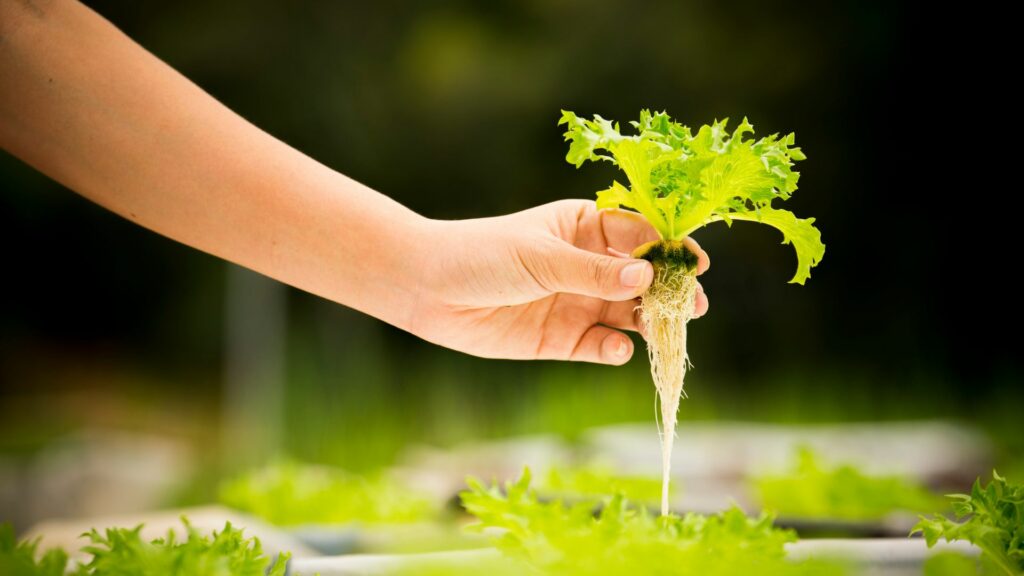
Hydroponics Without Nutrients – Is It Possible?
So time to answer the big question, is hydroponics without nutrients even possible? No, hydroponics without nutrients isn’t possible. Within a hydroponics system, the nutrients in the water are the only source of food for your plants and without the nutrients, your plants won’t grow.
Why You Need Nutrients
As we’ve just mentioned, all plants need a variety of nutrients to live. In traditional soil gardening and farming, these nutrients come from the soil and supplements like compost, manure or fertiliser.
Within a hydroponic system these things don’t naturally exist which is why you need to add them to your system.
The nutrients are divided up into two categories – macronutrients and micronutrients.
Macronutrients
These are the nutrients that your plants need in large amounts like phosphorus, hydrogen, nitrogen, oxygen, sulfur, potassium, magnesium, and calcium.
Micronutrients
These are essential nutrients that your plants need and include zinc, nickel, boron, copper, iron, manganese, molybdenum, boron, and chlorine.
Aquaponics As An Alternative
Okay so while it might not be possible to have a nutrient hydroponic system, aquaponics could be a possible alternative.
What is Aquaponics
Permaculture according to Permaculture News, aquaponics is a combination of aquaculture, which is growing fish and other aquatic animals, and hydroponics which is growing plants without soil.
Aquaponics uses these two in a symbiotic combination in which plants are fed the aquatic animals’ discharge or waste. In return, the vegetables clean the water that goes back to the fish. Along with the fish and their waste, microbes play an essential role in the nutrition of plants.
These beneficial bacteria gather in the spaces between the roots of the plant and convert the fish waste and the solids into substances the plants can use to grow. The result is a perfect collaboration between aquaculture and gardening.
However, even aquaponics has drawbacks. Because fish can’t produce the exact nutrients that your fish need, aquaponic systems can still leave your plants with nutrient deficiencies and will need additional nutrients added to the system to provide your plants with what they need.
Don’t Let This Put You Off
One of the biggest draws of hydroponics for me personally is the ability to monitor and manage my system and give my plants and crops exactly what they need in order to flourish.
If you’re not interested in adding nutrients to your systems then hydroponics might not be the growing method for you – you might be better off looking into organic soil gardening as an alternative.
The Bottom Line
So there you have it; hydroponics without sunlight is entirely possible; in fact, for many growers, it’s the best choice as it allows them to completely tailor the lighting requirements of the plants at each stage of development.
Moreover, hydroponics without nutrients isn’t possible, there are some more natural alternatives that you might consider. It’s also worth reading more into aquaponics or organic soil gardening which might be more up your street.

Hi, I’m Miles, the lead team member behind Gardeem.com. Besides being a passionate grower and writer, I’m a husband, father and grandfather to three! I started Gardeem in 2017 to provide simple and reliable gardening advice to everyone, regardless of their ability levels.





